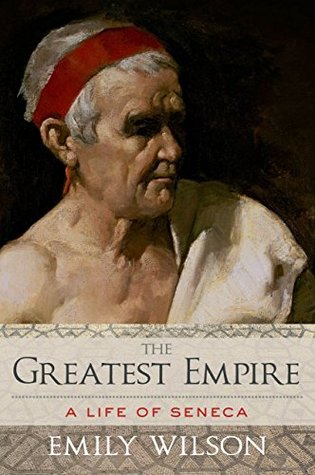More on this book
Kindle Notes & Highlights
Stoicism, the intellectual movement with which Seneca most closely associated, was designed to create a possibility of individual happiness in times of vast social unrest.
Stoicism can be seen as a more socially acceptable version of Cynicism, one that had deeper intellectual credentials and was more compatible with the normal behaviors of not only slaves and working people but also elite inhabitants of Hellenistic or Roman cities—
“Being poor is not having too little,” he declares: “it is wanting more” (Epistle 2).
The Stoics categorized the bad kinds of emotion into four general types: pleasure, pain, desire, and fear. Excessive emotions of these types are, they thought, the most important reason why people may fail to achieve appropriate spiritual tranquility.
the Stoic way is easier and more practical than the alternatives, since it is “easier to exclude dangerous things altogether, than to moderate them” (1.7.2).
the vast majority of people in the Empire lived at subsistence level or close to it, while the top one and a half percent controlled about a fifth of the total GDP (a proportion that is actually lower than in the contemporary United States but one that still represents a vast socioeconomic gap between rich and poor).
Avarice is therefore a function of false consciousness: the person who does not know how to become truly good (and therefore truly admirable), by becoming wise and virtuous in the proper Stoic mode, will grasp at these false goods, which can never nourish true self-respect.
“The practice of trying to become healthy is worth praising, regardless of whether it works. Surely it isn’t surprising if people who set off on the steep path don’t reach the very top. If you’re a man, look up to those who are attempting great things, even if they fall”
“In poverty, there is only one kind of virtue—not to be oppressed or crushed by it.
In actuality, the current of influence between Pauline Christianity and Roman Stoicism ran in the other direction. Paul was deeply influenced by Stoic philosophy, if not directly by Seneca. He borrowed the notions of indifferent things, of what is properly one’s own (oikeiosis), the ideal of freedom from passion, and the paradoxical notion of freedom through slavery, fairly directly from the Stoics. 4
The more substantive criticism Augustine makes is that Stoic ethics depend on human pride. The Stoics, including Seneca, claimed that the wise man can be entirely free from vice and can live in a state of total tranquility, undisturbed by false emotions. This claim, according to Augustine, is fundamentally false: since the Fall, no human being could ever achieve such a state in this world, and if anybody—like the Stoics—believes that he can live without sin, “he does not avoid sin, but rather forfeits pardon” (14).
Seneca’s account in On Anger of the passions, and especially of the distinction between “first movements” in response to a stimulus (by blushing or shivering or bursting into tears) and actual emotions, was transformed into a list of eight sins based on temptations to yield to bad thoughts 8 —a list that was then transformed again, by Pope Gregory the Great in the seventh century, into the Seven Deadly Sins that we know today.
Seneca’s careful analysis of “first movements” that were absolutely not worthy of moral blame had thus been transformed into its opposite: they were bad thoughts that revealed humanity’s fallen nature.
Descartes has often been seen as the father of modern philosophy and modern scientific thinking. But in his ethical thought, at least, he looked back closely to the ancients and especially to Seneca’s On the Happy Life, on which he gave an extensive commentary in his letters to Princess Elizabeth in 1645.
In purely formal terms, much in early modern drama was modeled on Senecan tragedy, including the five-act structure.


